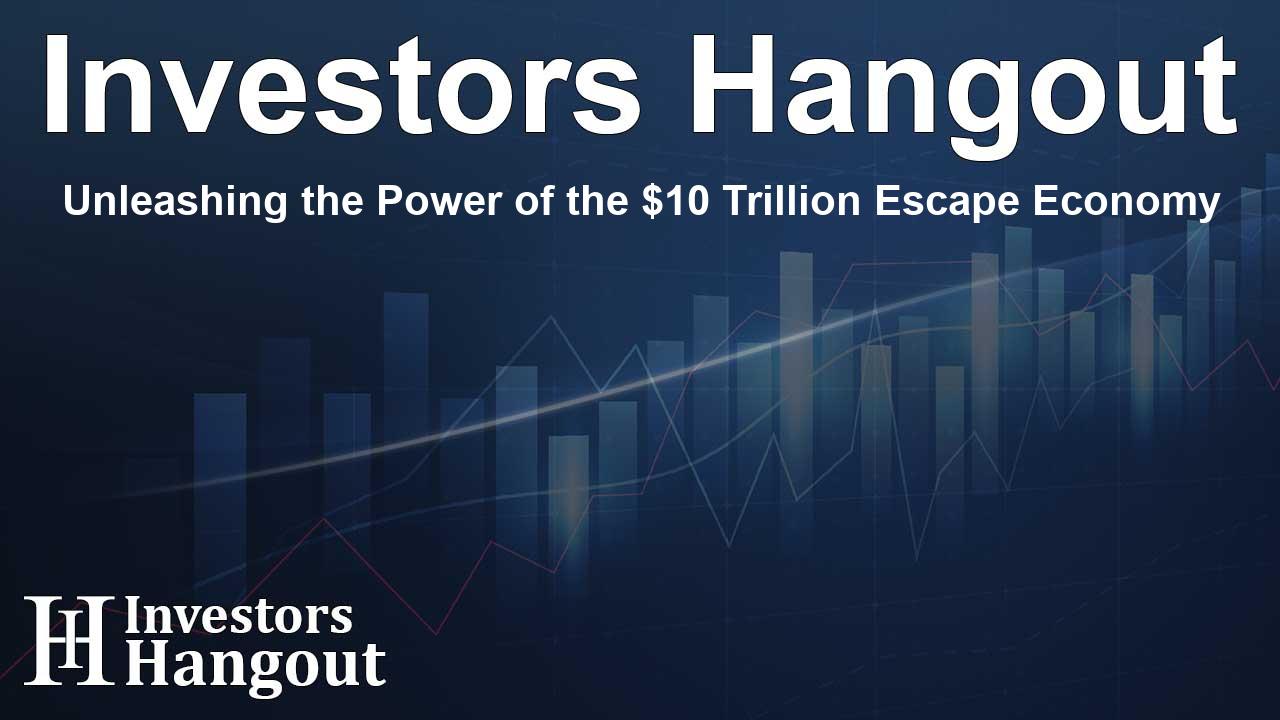Unleashing the Power of the $10 Trillion Escape Economy

Understanding the Escape Economy
The recent study released by McCann Worldgroup Truth Central unveils a compelling insight—91% of people around the globe seek moments to escape from the daily grind. This growing desire creates vast opportunities for brands looking to step into the evolving landscape of the "Escape Economy," now approaching a staggering $10 trillion.
The Role of Technology in Escapism
In today's fast-paced world, technology plays an essential part in how individuals seek relief. A significant portion of respondents—one in two—indicated that they go online to find their moments of escape. This research highlights that 86% of people acknowledge distractions as a healthy coping mechanism, with a notable 60% craving these distractions more than before.
Exploring Personal Escape Methods
People's interpretations of escapism vary widely, including activities like a simple run, listening to music, enjoying a leisurely lunch, shopping, scrolling social media, or gaming. Notably, the travel and tourism sector leads the escape market, valued at an impressive $3.2 trillion, while categories like Luxury Goods ($460 billion), Alcohol ($1.8 trillion), Health & Wellness ($220 billion), and Gaming ($106 billion) contribute substantial shares as well.
The Future Projection of the Escape Economy
Predictions suggest that the Escape Economy will continue to flourish, with an estimated growth to $13.9 trillion by 2028. This potential surge underscores the critical importance for brands—especially those traditionally unheard of in escapism—to embrace their roles within this emerging landscape swiftly.
Insights from Key Industry Experts
Laura Simpson, the Chief Intelligence Officer at McCann Worldgroup, emphasizes the necessity for every brand to engage in the business of escape. Whether businesses aim to innovate immersive travel experiences or provide daily distractions, the spectrum of escapism presents unique avenues for consumer connection. Brands that can master this balance will foster deeper bonds with their customers, cultivate loyalty, and unveil fresh growth opportunities.
Comprehensive Research Methodology
The comprehensive study employed a combination of methodologies, surveying over 16,000 participants across 16 markets, coupled with insights from 50 academic resources and interviews with 15 domain experts. This meticulous approach informs the exploration of escapism, revealing the significant dimensions of this fundamental human urge.
The Four Dimensions of Escapism
The research delineates four key areas on which brands can focus to effectively engage in the Escape Economy:
- Escape Mode: Escapism now transcends special occasions, encompassing a range of activities from immersive getaways to everyday diversions.
- Escape Decoded: Cultural contexts shape perceptions of escapism; for instance, Americans often seek relief from political turmoil, while different regions have varied distractors.
- Escape Frontiers: Emerging trends include "sleep tourism" and "day guesting," showcasing innovative ways consumers are redefining their downtime.
- Escape Designed: Successful escapism offers enhanced anticipation, shifts in perspective, and promotes a sense of freedom—allowing individuals to bask in spontaneity.
Jess Francis, Research Director, echoes the urgency for brands to rethink their position within this framework, urging all businesses to evaluate their involvement in the escapism space. With increasing stresses in an already chaotic world, people are bound to seek respite in the offerings available to them. If a brand fails to provide those escape options, they risk losing engagement to competitors.
Interestingly, the study reveals a fascinating psychology of anticipation—the act of looking forward to experiences often surpasses the beauty of the experience itself for 82% of participants. Additionally, two-thirds of respondents openly admit to finding happiness in thoughtful purchases, even when unnecessary.
Frequently Asked Questions
What is the Escape Economy?
The Escape Economy refers to a broad market where individuals seek various ways to escape daily stress, including activities like travel, shopping, and entertainment, projected to reach $10 trillion.
What role does technology play in the Escape Economy?
Technology serves as a platform for many seeking escapism, with one in two people utilizing online resources to find moments of relief.
How can brands participate in the Escape Economy?
Brands can engage by creating immersive experiences or daily distractions that connect with consumers' desire for escape, enhancing emotional ties and loyalty.
What are some examples of escapism activities?
Popular escapism activities include traveling, gaming, shopping, enjoying music, and other forms of entertainment tailored to individual preferences.
Why is understanding escapism important for brands?
As consumer needs evolve, brands must acknowledge and adapt to this desire for escapism to remain relevant and foster meaningful connections with their audiences.
About Investors Hangout
Investors Hangout is a leading online stock forum for financial discussion and learning, offering a wide range of free tools and resources. It draws in traders of all levels, who exchange market knowledge, investigate trading tactics, and keep an eye on industry developments in real time. Featuring financial articles, stock message boards, quotes, charts, company profiles, and live news updates. Through cooperative learning and a wealth of informational resources, it helps users from novices creating their first portfolios to experts honing their techniques. Join Investors Hangout today: https://investorshangout.com/
Disclaimer: The content of this article is solely for general informational purposes only; it does not represent legal, financial, or investment advice. Investors Hangout does not offer financial advice; the author is not a licensed financial advisor. Consult a qualified advisor before making any financial or investment decisions based on this article. The author's interpretation of publicly available data shapes the opinions presented here; as a result, they should not be taken as advice to purchase, sell, or hold any securities mentioned or any other investments. The author does not guarantee the accuracy, completeness, or timeliness of any material, providing it "as is." Information and market conditions may change; past performance is not indicative of future outcomes. If any of the material offered here is inaccurate, please contact us for corrections.